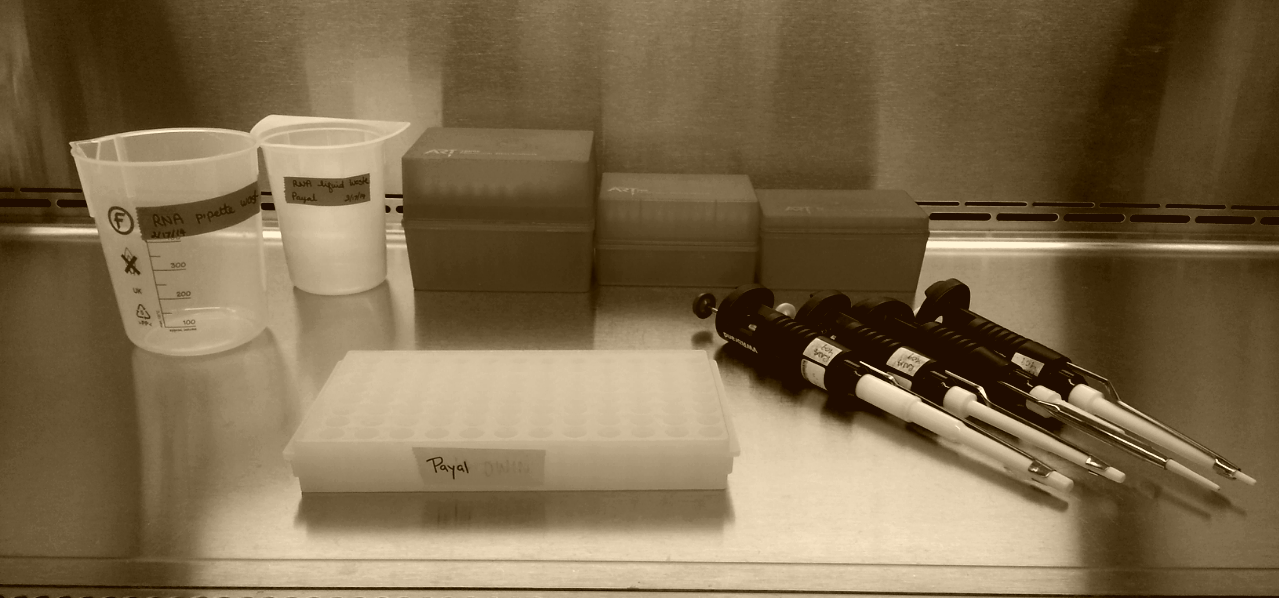Built on the foundation of last entry's T cell lineage commitment summary, this part will focus on the specifics of observed characteristics of heterodimeric TCR bearing (γδ/αβ) clones of CD4+ Vδ1+ γδ T cells.
Part-2: Characteristics of CD4+ Vδ1+ γδ T cell clones
Ziegler and colleagues were able to make extremely long-lived clones of CD4+ Vδ1+ γδ T cell clones by culturing lymphocytes from healthy individuals and observed the following:
- Clones were able to change their TCRs from γδ to αβ over time
- Clone morphology was similar to that of Large granular lymphocytes (LGLs)
- Constant region of the TCR-γ9+ chain contained a Cγ1 region
- Clones expressed CD34(lo), CXCR4, TGF-β and receptor, IL-7R, c-Kit and FLT-3.
- Like DN1-stage, CD4+ Vδ1+ γδ T cell clones were CD34+ (albeit low) CD38+ CD1a-.
- Clones rapidly expressed CD2 during cultivation, which was initially absent
- Spontaneously produced cytokines such as TGF-β, IL-2, -4, -5, -6, -10, -13, -17A, IFN-γ and TNF-α upon PMA+IONO
- Clones were CD45RO+, CD45RA-, CDG2L-, CD27- and CCR7-.. and therefore, characterized as effector memory cells.
Let's look at a couple of these in more detail.
(3) is interesting where they found that the C-region of TCR-γ9+ chain employs a Cγ1 region.
There are two major subpopulations of γδ T cells based on their "V" and "C" gene segment usage. In the PBMCs, majority of γδ TCRs are Vγ9/Vδ2. TCR of these chains link the γ and the δ chains via di-sulfide linkages. Therefore, the TCRγ and chains use the Cγ1 region and not Cγ2. Salvatore Ciccarese and colleagues wrote this beautiful paper comparing the differences in Cγ regions by the γδTCRs in three species: humans, mice and artiodactyls. Study is titled, "Evolution of T-cell Receptor Gamma and Delta Constant Region and Other T-Cell-Related Proteins in the Human-Rodent-Artiodactyl Triplet." In humans, he says, the main differences between the Cγ1 and Cγ2 is simple: there are 3 exons for Cγ1 and four for Cγ2. The second exon is duplicated in the Cγ2 which lacks a Cysteine that makes a di-sulfide bridge, and hence, Cγ1 is a major segment used by the TCRγ9 chains.
(8) Clones were likely effector memory cells. This is by far the most interesting characteristic because these clones are extremely long lived and are isolated from healthy human PBMCs. Ziegler et al states that these are not naiive but are effector memory cells. The reason this is the case is because they did not express the CD45RA Ag, suggesting they are not naive. To clarify, CD45RA is expressed on naïve T cells, as well as the effector cells in CD4+ populations. However, upon Ag experience, central (Tcm) and effector (Tem) memory T cells gain expression of CD45RO and lose expression of CD45RA. Therefore, we use either CD45RA or CD45RO to generally differentiate the naïve from memory populations. Another way to further differentiate naiive from effector or central memory is by quantitating the expression of CCR7 or CD62L. While both naiive and central memory cells expresss CCR7 and CD62L, effector memory or effector cells tend not to.
CD4+ Vδ1+ γδ T cell clones expressed CD45RO+, but not CD45RA, CD62L, CD27, or CCR7− and sometimes expressed CD28. While they lacked the CCR7 expression, the clones expressed other chemokine receptors such as CCR4, CXCR1/CXCR2, CCR6, and CXCR4 - which direct the movement of circulating T cells to sites of inflammation and tissue injury. This is important detail to remember and ties back the inflammatory microenvironment of the ex vivo cultures. Ziegler et al shows that the CD4+ Vδ1+ γδT cells
that lack thymus-homing properties but carry chemokine receptors (CCR) that direct circulating T cells to sites of inflammation, can develop into functional, mature CD4+ or CD8+ αβT cells in an inflammatory environment.
Individual steps of this development will be discussed in part 3.
